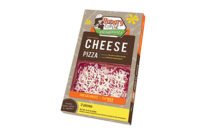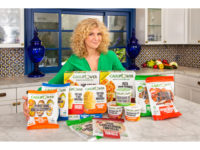Frozen foods is the hot place to be right now, with sales spiking after several years. As a player in the frozen pizza space since 2013, it’s wonderful to see this category shift, and we believe it’s due in large part to the innovation and influence of better-for-you brands entering the marketplace.
Thanks to improved technology and innovation that simply wasn’t around 20 years ago, frozen products no longer need to be the unhealthy choices they once were. Companies have an opportunity to deliver all the nutritional benefits of fresh food with the convenience of a frozen product, and by doing so, meet the wants and priorities of today’s savvy consumers.
For burgeoning brands on this mission, here are a few lessons we’ve learned along the way:
Less is more. Focus on fewer ingredients vs. longer shelf life. The freezing process already extends the shelf life of your product; it doesn’t need to be longer. Instead, choose to create a product with no artificial ingredients or preservatives. Avoid anything fake in your food.
Focus on your core values. You can’t be everything to everybody. At Smart Flour Foods, Austin, Texas, ancient grains have always been our vehicle to deliver natural, gluten-free products. Choose what you want your consumer to experience and work backwards from there, i.e. what’s your brand standard, and who are you trying to attract?
Strive to be the best tasting. Don’t lose sight of how incredibly important taste is. Your product may check every “on-trend” attribute box, but the ones that are going to be left standing are those that can hold their own against the category and not just a subset of the category.
Work as a team with suppliers. Collaborate with your suppliers and contract manufacturers rather than trying to internally develop your own sourcing strategy. It doesn’t do you any good to source an upside-down purple olive if you can’t get it when you need it. To prevent your production calendar from being disrupted, be realistic about what ingredients are consistently available within the supply chain.
Choose the right retail partners. Just because the retailer wants you doesn’t mean you’re the right product for that retailer. Target the retailer that makes the most sense for your product, and understand the perception that comes with being sold in a natural grocer vs. conventional or club. The right retailer will give your brand credibility in the space and provide insight into how your product performs.
Crawl, walk and then run. Be patient and smart about your choices. From price point to product quality, don’t think you know everything in the beginning. You can learn a lot from an early roll out. Take those lessons before you move on.
Keep the champagne on ice until you stay on the shelf. Half the battle is getting on the shelf, and the other half is staying on the shelf. Stay true to your core values, as you strive to create a product and brand that resonates with the consumer and the buyer.



